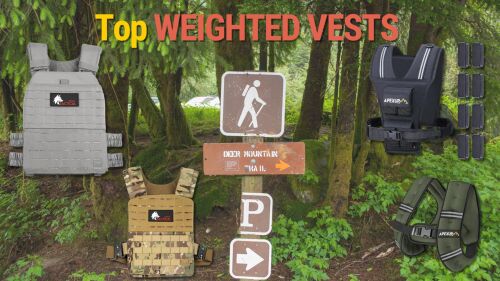The life of a patrol officer is rarely predictable. One minute you’re directing traffic or sitting in your car, the next you could face an officer-down rescue or pulling someone out of a burning car. Unlike sports players, first responders do not have the luxury of always knowing who or what their opponent is, the location where they will be operating or even if they will eat that day. For that reason, our training needs to be modified to fit the demands of our unique job.
While agility and endurance are important to overall health, sometimes we forget that raw strength often plays a decisive role in critical moments. In Police1’s “What Cops Want in 2024” survey results, which polled 2,833 LEOs from across the country and documented the top needs for officers in 2024, better physical fitness training emerged as one of the top needs.
More than half of us don’t exercise the 150 minutes recommended by the Centers for Disease Control and Prevention and most know we are not getting enough exercise to meet the demands of the job. While all exercise is important, only 59% of us actively train for strength.
I have always been big into weightlifting and combat sports, but the stress of the job, poor food decisions while on duty and lack of sleep eventually caught up to me. When I had to move an unconscious 220-pound male to safety, I couldn’t move him by myself. From that day on, I decided to adjust my training to focus more on functional strength related to the job.
Focus on functional fitness
Functional fitness, as described by the International Sports Science Association, is the demand and occupational specific prescription of progressive and integrated multi-join, multi-planar, and proprioceptively enriched movements at various loads and various speeds.
In other words, these are exercises designed to improve your ability to perform daily activities making everyday tasks easier and safer. The goal should be to use the triple extension of your ankle, knee and hip joints.
I hate to admit when firefighters do something better than police officers, but they are definitely winning the functional fitness game. They understand the importance of profession-focused fitness, which is why you see them running around with hoses, dragging dummies across the yard or hitting something with a sledgehammer. And for cardio, they play ultimate frisbee.
In reality, police officers in many cities are more likely to arrive on scene before the fire department does. It may be up to us to pull people to safety, break down a door or lift something heavy off someone. Police officers need to train a little more like firefighters. I can’t believe I just wrote that.
If I could choose one tool that all police gyms should have on hand, it would be sandbags weighing 50 to 250 pounds. Unlike weightlifting equipment that isolates specific muscle groups, sandbags force the body to stabilize and engage multiple muscle groups simultaneously.
They are also awkward to pick up. Sandbags teach the user how to grip odd-shaped objects and how to move while carrying weight. This translates directly to real-world scenarios where officers need to exert force while maintaining balance and control. You can supplement old beer kegs filled with water or sand if you have those lying around.
Here are some examples of how sandbags and kegs can be used for officer training:
- Squats and lunges: These basic exercises build lower body strength, essential for takedowns, grappling and maintaining a powerful stance during confrontations.
- Shoulder press: Lifting sandbags or kegs overhead strengthens the shoulders, core and arms — crucial for controlling suspects and manipulating heavy objects during emergencies.
- Carries: Carrying sandbags or kegs for distance builds overall stamina and core strength, beneficial for foot pursuits and carrying injured individuals.
Functional fitness isn’t just a trend — it’s a necessity. Learn how to incorporate strength training tools like sandbags and weighted dummies into your routine to stay ready for anything. Watch the video below to discover the game-changing fitness tips every officer needs.
Learn to carry heavy things
Police officers must learn to carry heavy things safely, without injury and without causing excessive stress on our bodies. Carrying odd-shaped items like the yoke, a traditional farming implement, has become a popular tool for strongman training, but it can be a valuable addition to an officer’s fitness routine for several reasons:
- Upper body power: Yokes require significant upper body strength and stability to lift and carry. This translates to increased strength for handcuffing, disarming suspects and moving heavy things without injury.
- Core strength: Yokes build the core. When used properly, yokes can help you use muscles in your core that are rarely worked through traditional weightlifting.
- Mental fortitude: Carrying a heavy yoke requires mental toughness and focus. This translates to better focus and resilience during stressful situations. Like my trainer said: “Heavy yoke walks work your soul.”
Practice real-life situations
If I could start over with my police fitness career, I would have used weighted dummies in my training. Dummies are great for simulating real-world rescues. Filled with sand or weighted materials, dummies can be used to practice dragging unconscious individuals, lifting injured persons from difficult situations and carrying victims out of danger zones. They are also very awkward to carry.
Here are some rescue scenarios that can be effectively practiced with dummies:
- Stair drags: Dragging a weighted dummy up or down stairs builds upper body and core strength, essential for rescuing people from burning buildings or collapsed structures.
- Car extractions: Practicing lifting a dummy from a car simulates the process of extracting injured individuals from difficult positions.
- Carrying: If you have ever carried an injured person to safety, you quickly realize that every person is different. Some people are easier to throw on your back and some to throw over your shoulder, while others you have to drag. Practice carrying the dummy using different positions.
Unconventional training tools for everyday strength
There are a ton of different tools an officer can add to their weightlifting routine. While gyms offer a plethora of equipment, most fall short when it comes to functional strength equipment. With police gyms, we have more freedom to add the tools we need to do the job. Here are some more of my favorites.
- Farmers handles: This exercise involves carrying a heavy object in each hand for a distance. It builds grip strength, fantastic upper back strength, core stability and overall work capacity. These should be mandatory in every police gym.
- Beer kegs: These are not filled with your carbonated beverage. Instead, they are filled with water or sand. If the keg is full of water, that water will be sloshing around — making it harder to hold and carry, working all the little stabilizers in your body.
- Atlas Stones: These large, spherical stones, commonly used in strongman competitions, can be found in some gyms or replicated with heavy medicine balls. Lifting and carrying Atlas Stones challenges full-body strength and coordination. It is also one of the only exercises that works your crushing strength, which is highly beneficial when using force or holding onto something.
Conclusion
Proper form and technique are crucial for all functional movement. You are moving with weight. Before picking up anything new, research the tool you are using by watching instructional videos. Learn the movement and start light. Once you are proficient, you can add one functional lifting movement into your normal weight routine.
Embrace your inner firefighter in training and remember: if you’re not sweating like you just rescued a cat from a tree, you need to work harder.
Train hard, be safe.
NEXT: Discover how weightlifting belts can help first responders boost their strength while protecting their backs.






